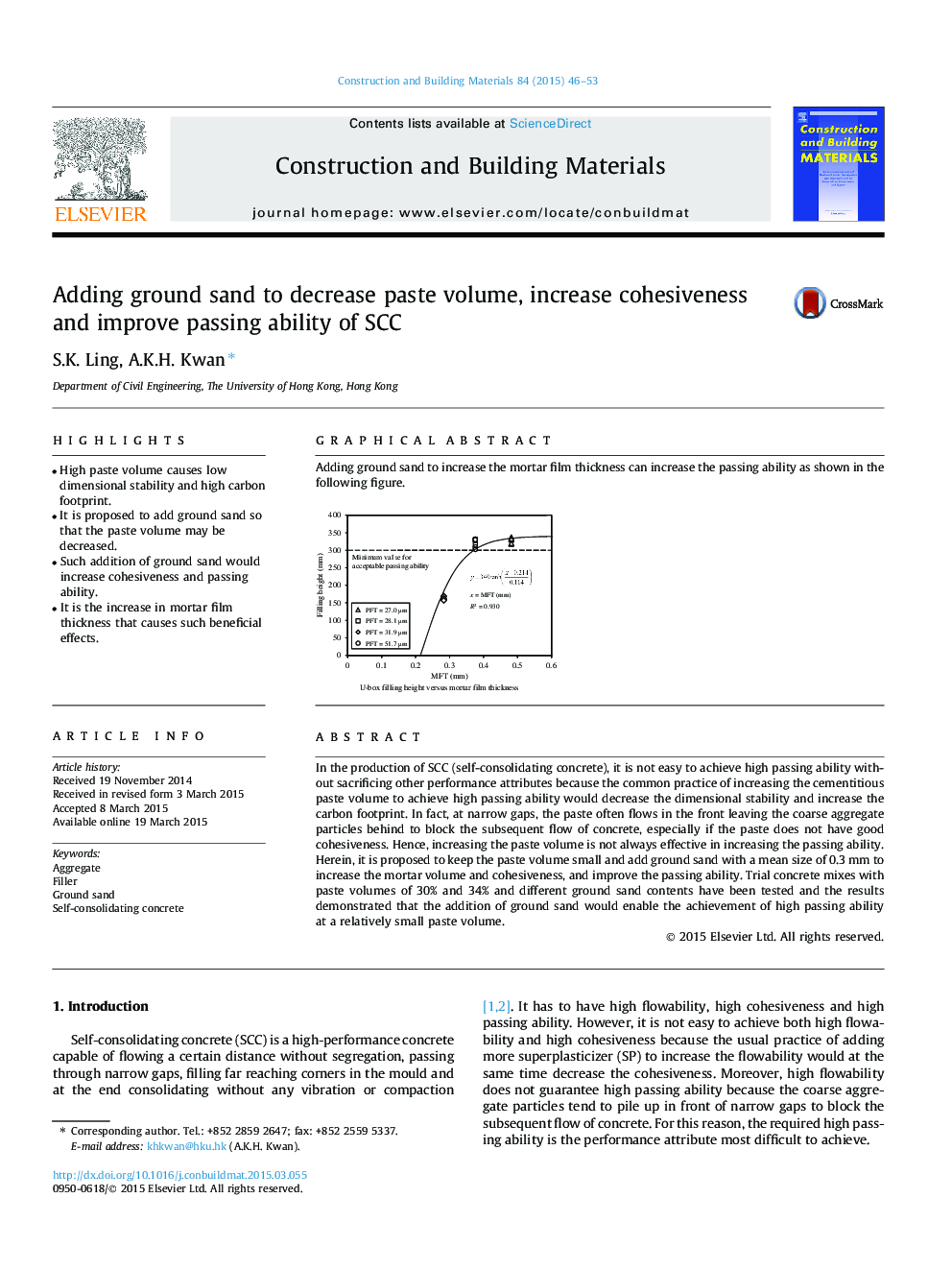| Article ID | Journal | Published Year | Pages | File Type |
|---|---|---|---|---|
| 257039 | Construction and Building Materials | 2015 | 8 Pages |
•High paste volume causes low dimensional stability and high carbon footprint.•It is proposed to add ground sand so that the paste volume may be decreased.•Such addition of ground sand would increase cohesiveness and passing ability.•It is the increase in mortar film thickness that causes such beneficial effects.
In the production of SCC (self-consolidating concrete), it is not easy to achieve high passing ability without sacrificing other performance attributes because the common practice of increasing the cementitious paste volume to achieve high passing ability would decrease the dimensional stability and increase the carbon footprint. In fact, at narrow gaps, the paste often flows in the front leaving the coarse aggregate particles behind to block the subsequent flow of concrete, especially if the paste does not have good cohesiveness. Hence, increasing the paste volume is not always effective in increasing the passing ability. Herein, it is proposed to keep the paste volume small and add ground sand with a mean size of 0.3 mm to increase the mortar volume and cohesiveness, and improve the passing ability. Trial concrete mixes with paste volumes of 30% and 34% and different ground sand contents have been tested and the results demonstrated that the addition of ground sand would enable the achievement of high passing ability at a relatively small paste volume.
Graphical abstractAdding ground sand to increase the mortar film thickness can increase the passing ability as shown in the following figure.Figure optionsDownload full-size imageDownload as PowerPoint slide
